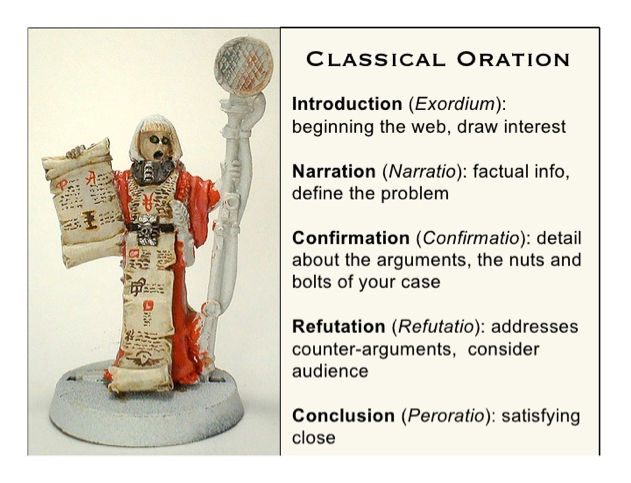Classical Arrangement
- Page ID
- 186160
|
|
|
1. Introduction (exordium)The introduction serves two purposes: to inform the audience of the subject of the discourse, and to make the audience likely to accept to the speaker or writer's argument. Consequently, the speaker or writer's ethos is particularly important here. 2. Statement of Fact (narratio)This section informs the audience of the circumstances that must be known before the formal argument is presented. It is advised that this portion of the discourse be brief and plausible. 3. Confirmation (confirmatio)The core of discourse, in which the argument is presented and proven. Generally, it is not advisable to present arguments in descending order of strength, as it has a debilitating, anticlimactic effect. The proper sequencing of arguments depends on the particular disposition of the audience, the subject, the occasion, and the subjective tastes of the speaker or writer. 4. Refutation (refutatio)Refutation can be achieved in a variety of ways, including logical appeal, emotional appeal, ethical appeal, wit (joke, humor, sarcasm, puns), etc. This is also the spot where you might way to point out areas where you could agree with the other side. However, you mostly want to refute the other side and break down their arguments. It should be noted that at times it will be appropriate to present a refutation before one’s confirmation. For example, if an opposing speaker is well received, it will be valuable to refute his arguments before offering one’s own. 5. Conclusion (peroratio)Aristotle teaches that the conclusion ought to do four things:
|
Image source: Rhetoric www.slideshare.net


